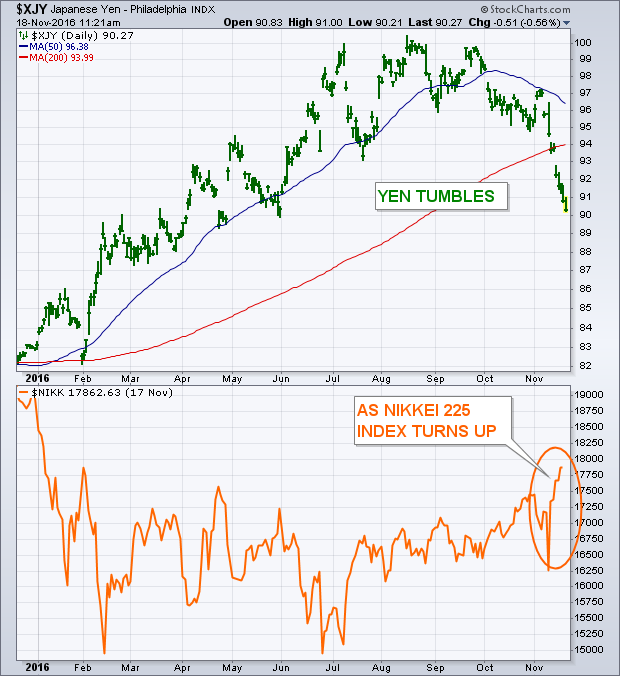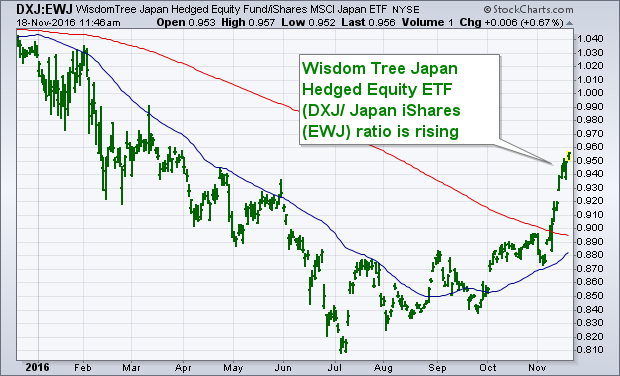My October 6 market message suggested that the Japanese yen was peaking which would give a boost to export-oriented Japanese stocks which appeared to be bottoming. Since then, the yen has fallen to the lowest level in six months against the dollar, and has fallen below its 200-day average (Chart 1). At the same time, the lower box shows the Nikkei 225 Index rising to the highest level since January (based on today's higher close). But that's only part of the story. That earlier message explained that foreign investors (like Americans) buying Japanese stocks need to hedge out the negative effects of a falling yen. As explained at the time, the easiest way to do that is through the Wisdom Tree Japan Hedged Equity ETF (DXJ).
 DXJ OUTPACES EWJ... As I've explain in the past, foreign stock ETFs traded here in the states are quoted in U.S. dollars. As a result, they tend to do worse when the dollar is rising against the local currency (like the yen). Since October 1, for example, Japan iShares (EWJ) have actually lost value (-1.5%) despite a nearly 10% gain in Japanese stocks. By comparison, the Wisdom Tree Japan Hedged Equity ETF (DXJ) has gained 10% over the same time span. The difference between the two Japanese stock ETFs is mainly an -8% drop in the yen. Chart 2 plots a ratio of the DXJ divided by the EWJ since the start of the year. The ratio started rising during October as the yen started to drop, and has risen to the highest level in nearly eight months (meaning the DXJ is doing much better than the EWJ). That's because the DXJ hedges out the negative effect of a falling yen. The same principle holds when investing in other foreign markets. This week's upside breakout in the dollar increases the need for hedging out the negative effect of falling foreign currencies when buying foreign stocks.
DXJ OUTPACES EWJ... As I've explain in the past, foreign stock ETFs traded here in the states are quoted in U.S. dollars. As a result, they tend to do worse when the dollar is rising against the local currency (like the yen). Since October 1, for example, Japan iShares (EWJ) have actually lost value (-1.5%) despite a nearly 10% gain in Japanese stocks. By comparison, the Wisdom Tree Japan Hedged Equity ETF (DXJ) has gained 10% over the same time span. The difference between the two Japanese stock ETFs is mainly an -8% drop in the yen. Chart 2 plots a ratio of the DXJ divided by the EWJ since the start of the year. The ratio started rising during October as the yen started to drop, and has risen to the highest level in nearly eight months (meaning the DXJ is doing much better than the EWJ). That's because the DXJ hedges out the negative effect of a falling yen. The same principle holds when investing in other foreign markets. This week's upside breakout in the dollar increases the need for hedging out the negative effect of falling foreign currencies when buying foreign stocks.

